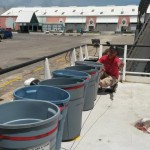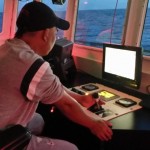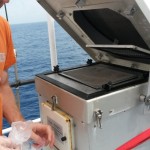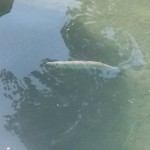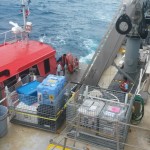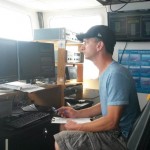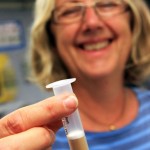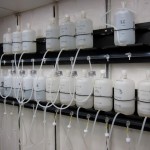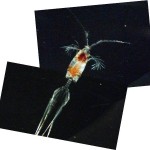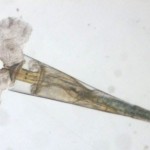- Karen Wishner
- Paul and Jon in their lab space
- Violetta and Sam getting ready
- Kat & Justin setting up!
- Jon Cohen setting up his lab space
- Steve Tuorto settin up his water baths
- Barbara Cotrell captures everything on columns
- Adelaide captures zooplankton pictures on a microscope
- Steve Tuorto in the immersion suit… perfect fit
- Dolphins!!
- A flying fish cruising over the waves. Photo by: Paul Suprenand
- Mahi-Mahi coming to the boat, and we caught one!
- Safety first!! Try your immersion suit on everyone
- Waking up exhausted is worth it when you wake up to this
- Sam and Tina operating the CTD from the bridge
- Jo Jo operating the CTD winch on the bridge
- Lauren hard at work filtering her incubated microbes
- Chris securing his aerosol sampler
- Chris changing the filter on his aerosol sampler… He is getting some great dust!
- You have to be surly when your on watch (Steve Tuorto)
- Barracuda waiting by the docks for us
- The Atlantic Explorer as Captain George puts her in a 180 deg spin to dock her with BIOS waiting for us in the background.
- The harbor pilot jumping from his ship to the Atlantic Explorer to help guide us to the dock
- Bermuda appearing on the horizon
- A clean filter next to a filter containing bacteria and phytoplankton from seawater
- Steve Tuorto operating the CTD from the bridge of the ship
- Chris can see you
- Barbara and her organic matter column
- Seawater Filtration System
- The CTD
- Lauren Sampling the CTD
- Ladies of Science
- Eyes
- Jojo wearing fancy specks
- A Shot of Jon with Krill
- A pteropod – Atlanta inflata
- Jojo operating the CTD winch
- Jake holding the Mahi Mahi that RONNY caught
- Dexter and Buddy, best-chefs-ever!!!
- krill
- Sometimes the copepods have ornamentation (feather like appendages) that cannot fit into one picture. These feathery tufts help the copepod to maintain its position in the water column and to avoid predators by appearing larger than they are.
- Sometimes we even catch fish in the nets as well. This fish is not a sea monster, it is actually called a hatchet fish, a deep sea dweller that has large eyes to see in the dark. This is actually a larval fish that is about 3 cm long, about 1/3 of it is the head at this stage.
- Not all things we find in the net are obviously animals. This small group of spherical shapes is actually a single-celled animal called a foraminiferan (“foram” is the nickname of this cute little blob).
- Copepod
- One of the more unusual crustaceans we have been finding are these stomatopods, notable for having eyes that are on stalks that stand out from its head, looking out for hatchet fish probably.
- What we see when we first look through the microscope.
- Getting ready to view zooplankton under the microscope.
- This funny looking animal is a pteropod, a type of mollusk (similar to a snail). The winglike structures protruding from its glasslike shell allow it to move through the water like a bird flapping its wings.
- Microscopic image of a pteropod: Look closely to see if you can see the organisms its EATEN!
- Tony demonstrating the immersion suit
- Dexter holding Ronny’s Mahi-Mahi
- Maureen Conte going over safety for the CTD garage






